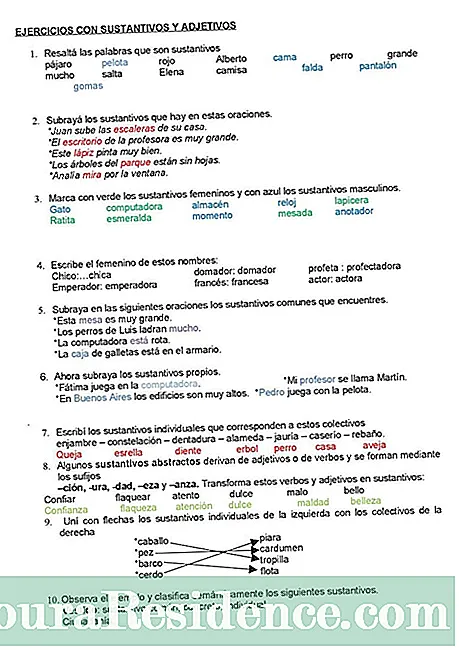
Content
The grasses (also known as Poaceae) are herbaceous (and some woody) plants that belong to the order of the monocots. There are more than twelve thousand species of grasses in almost all parts of the world.
There are two types of grasses, according to their life cycle:
- Annual grasses. They have a cycle and reproduce once a year. For example: wheat, oats.
- Perennial grasses. They reproduce more than once a year. For example: grasses, bamboos.
Importance and use of grasses
Most of the grasses are used to make products such as flours since most are cereals (barley, rice, wheat among many others).
Others are used to make papier-mâché, for which they use the stem or straw. In addition, the manufacture of ropes with stems and leaves of grasses is frequent.
Examples of grasses
- Birdseed
- Rice
- Oats
- Bamboo
- Sugar cane
- Barley
- Rye
- Falaris (Phalaris Tuberosa)
- Robust Fescue
- Corn (Zea Mais)
- Son
- Ball Grass (Dactylis Glomerata)
- Pastures
- Sorghum
- Wheat
Stems
The stems of the grasses They are also called reeds because they are cylindrical and elliptical. They have knots of solid texture and between these knots, the canes are hollow, which allows them to have enough flexibility to grow in windy areas. In turn, the stems of grasses can be:
Aerial stems:
- Ascending stems. They are ascending and straight and have short internodes near the base and more widely spaced towards the apex.
- Creeping stems. They are stems that do not rise vertically but do so at ground level.
- Floating stems. They are herbaceous plants that grow in water and float thanks to the hollow stems of grasses.
Underground stems:
- Rhizomes. They are underground stems that give off (with horizontal growth) roots or shoots from their nodes.
- Pseudobulbs. They are stems that thicken in the internodes and are rare among the grasses (An example of this subclass is the Phalaris tuberosa or birdseed.
Leaves
The leaves of the grasses They are made up of three parts:
- Sheath. It covers the stem and overlaps with it.
- Ligule. Membrane or group of hairs between the leaf blade and the petiole. (in some species it may not be present).
- Leaf blade. Sheet that covers most of the leaves of grasses.
Flowers and fruits
They have a structure called inflorescence, that is, the flowers are located at the end of the stem. In addition, the flowers of grasses can be unisexual or hermaphroditic. The fruits of grasses can be seeds (most grasses have a seed as a fruit), nuts or caryopses.
It is important to note that grasses produce a significant amount of pollen that is distributed by the wind. Therefore, the grasses that have sexual reproduction, the seeds are spread thanks to the action of the wind.


